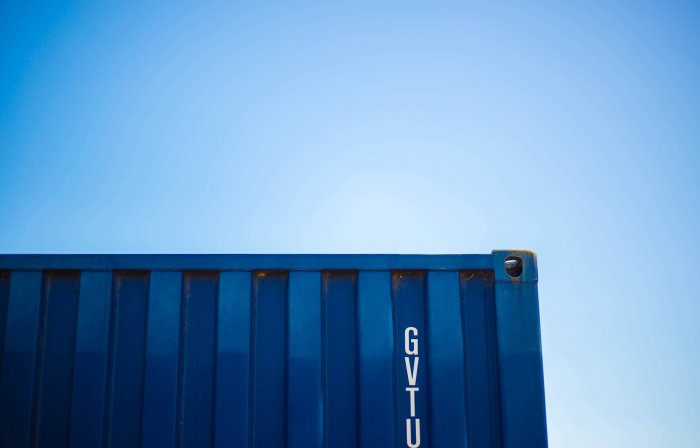
Whether you’re looking for a shipping container to convert into a tiny home, or you’re just looking for a mobile form of storage space, a 40’ cargo container is probably just what you’ve been looking for.
No matter what you want a shipping container for, the most important factors to consider is the condition the unit is in. But because shipping containers are made of solid steel, many people tend to believe that even used or worn-out containers are just as solid.
However, purchasing a worn-out or extremely rusty container could cause you a lot of headaches, even though you’ll likely manage to save yourself a bit of money on the purchase price. Worn or rusty containers are more likely to have holes in them, and even though they may still appear to be fully intact, they won’t last as long as a container that hasn’t started rusting yet.
In the following article, we’re going to look at a few different types, as well as what to look for when shopping for either new or used shipping containers. Read more about the different types of shipping containers here.
What Makes a Quality Shipping Container?
Before we look at how to properly inspect a prospective container, it’s important to understand the importance of finding a shipping container that is right for you. For this, you’re going to need to think about what you want your shipping container for.
If you plan on converting your shipping container into a tiny home, it’s important to properly plan your home first before shopping around for container models. You’ll also need to decide what type of container you need, be it a standard container or a high-cube container.
However, selecting the best shipping container doesn’t only involve buying the right shape and size. We’ll dive into a few more particulars about inspecting potentials containers, but for now, we just want to emphasize the importance of choosing a model that will suit your specific needs.
There will always be the temptation to cut corners, especially when looking at different shipping container prices. However, we strongly urge you to fully consider all factors and avoid choosing a shipping container simply because it was the most affordable one available.
Many times, cheaper shipping containers are heavily rusted and could already be structurally weakened. Even if you’re ok with using an older, damaged container, understand that you’ll likely have to perform some repairs to the container before being able to use it.
Types of Shipping Containers
While there are about a dozen different types of shipping containers, most used for either tiny homes or for simple storage purposes are of the standard or high-cube variety.
Standard Containers
Standard shipping containers are usually 40 feet in length, although it’s also possible to find standard 20 foot and 45-foot models. Standard containers are always 8 feet and 6 inches tall and 8 feet in width.
Because standard shipping containers are the most common type, they are usually less expensive than other types of containers.
High-Cube Containers
For many, especially those who are planning on converting their container into a tiny home, high-cube containers are the preferred choice. High-cube shipping containers have the same overall dimensions as a standard container, however, they are one foot taller and measure in at a total height of 9 feet.
For tiny home builders, this extra foot of space can make a considerable difference in planning and designing. In fact, the added space allows you to insulate your home’s floors and ceiling, all while maintaining the same amount of headroom as found in a standard shipping container.
If you were to do the same thing in a standard container, you would lose a significant amount of headroom. Fortunately, using a high-cube container solves this problem. You can learn more about pricing for a shipping container for sale online.
Inspecting Shipping Containers
The following tips are mostly for when you’re shopping for a used shipping container. So, if you’re planning on purchasing a new container, you won’t need to do inspect it as thoroughly as you would a used one. However, it’s still a good idea to know what to look for.
No matter what you need it for, it’s important to thoroughly inspect the unit before purchasing it. Failing to do so could result in issues that will need to be addressed later and could even result in a rather expensive repair bill.
Initially, we recommend walking around the container, looking along and down each side, making sure that both sides look as straight as possible. At the same time, keep an eye out for any obvious physical damage such as rust or dents.
If you’re looking at a used container, it’s expected to see small dents and a small amount of rust. Minor damages like this are not generally an issue, but if there are any large rust spots or major dents, the unit’s structure could already be seriously damaged.
If you see any smaller rust patches, just be sure to check if the metal is flaking or if it’s severely weakened. If the metal flakes heavily, you’re probably better off purchasing another container instead.
Since you want your container to be weatherproof, it’s also important to ensure that the roof is fully intact.
Therefore, it’s a good idea to climb onto the roof and inspect it for any signs of leaks or major corrosion. Again, minor rust spots can be dealt with, but if the roof is flaking or severely warped, you might want to start looking somewhere else.
After you’ve thoroughly inspected the exterior of the container, it’s time to take a look at the inside.
If the unit has been closed for a while, make sure to perform a “smell test” when you first walk into it. This helps give you an idea if there is any mold or toxic chemicals present in the container. If you walk in and the container smells strongly of mold, there’s likely a leak somewhere in the container’s shell.
If the unit passed the smell test, the next thing to check is that the container is watertight. For this, we recommend having someone close the doors while you’re inside and looking to see if there is any daylight entering from anywhere.
Don’t forget to bring a flashlight with you and take a close, systematic look at all moving parts to ensure they’re in good working order. Finally, pay extra attention to the container’s wooden flooring to make sure there aren’t any holes present.


